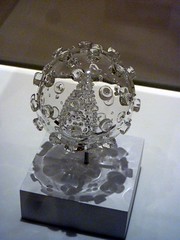
- Image by Arenamontanus via Flickr
When Luke Jerram was growing up in the sleepy town of Stroud, England, he discovered that he suffered from dichromatic colorblindness.
But instead of lamenting this fact, he construed it as a gift, his own auspicious window into the world. Jerram became obsessed with the mysteries of human perception, both its idiosyncratic nature and its innate limitations.
Later, he began investigating these mysteries. Where does the visual perception of an object end and the memory of it begin? But when it came time to choose a course of study at university, instead of tackling such questions through systematic inquiry, Jerram took a different path. He enrolled in art school. “Scientists and artists start by asking similar questions about the natural world,” Jerram says. “They just end up with completely different answers.”
Although he admits that the ratio of girls to boys in art school versus science and engineering programs influenced his decision, it was really the breadth of methodology and lack of formal structure that attracted him to the arts. “The nice thing about being an artist is that I can jump around from one area of interest to the next—microbiology one week and the gravitational pull of the Moon the next,” he says. “Scientists don’t seem to be allowed to do that anymore—they have to specialize in their own little field—which is a shame, I think.”
Jerram creates sculptures, installations, soundscapes, and live arts projects that investigate the mysterious process of how we construct inner worlds from objective reality. His work is inspired by such disparate areas of research as biology, acoustic science, sleep research, ecology, and neural pathways.









